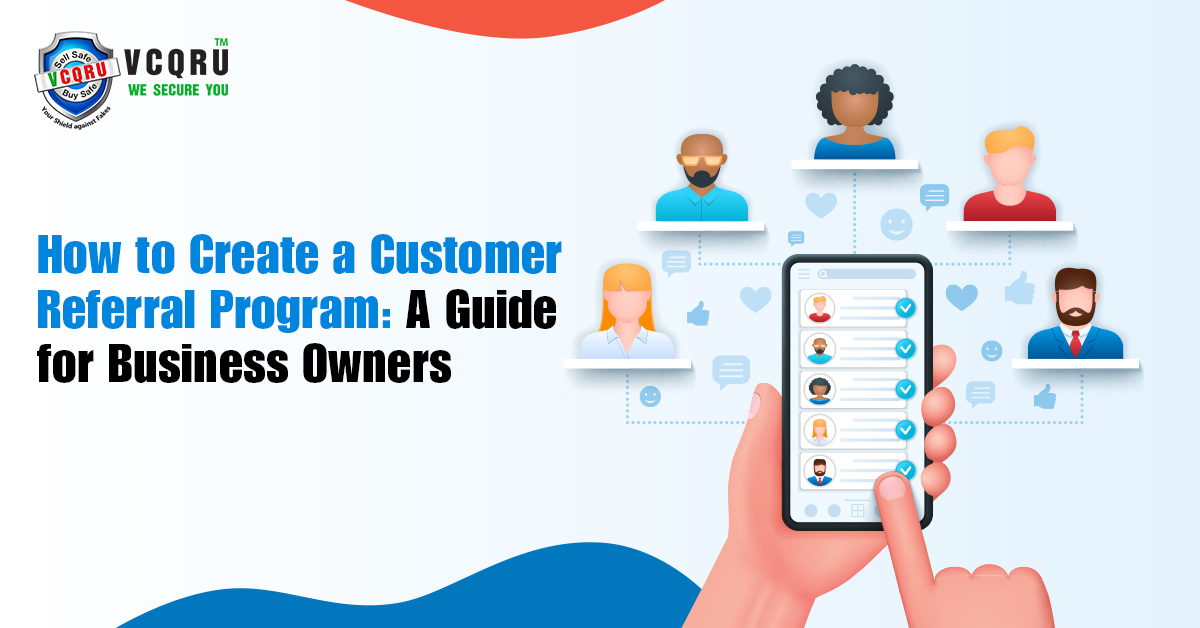How to Create a Customer Referral Program: A Guide for Business Owners
Aug 01, 2024

Customer referral program is a powerful marketing tool that helps to grow your business through word-of-mouth marketing. By incentivizing your current customers to attract new customers, you can create a sustainable growth model that enhances brand loyalty and attracts high-quality leads and drive sales. Here’s a detailed guide to help you create an effective customer referral program.
1. Define Your Goals
Defining your goals before designing your referral program is essential. Know what you want to accomplish with your referral program. Common goals include:
-
Increasing customer acquisition
-
Boosting sales and revenue
-
Enhancing customer loyalty
-
Raising brand awareness
Clear goals will help shape the structure and incentives of your referral program. And determine specific, measurable targets such as the number of new customers, sales increase percentage, or referral rate.
2. Understand Your Customers
Understanding your customers is key to creating a successful referral program. Identify which segments of your customer base are most likely to participate in the referral program. Conduct surveys, analyze customer data, and gather feedback to understand their preferences and behaviors. Key insights include:
-
What motivates your customers?
-
What incentives will they find appealing?
-
How do they prefer to share information?
3. Choose the Right Incentives
Incentives are crucial to motivating customers to participate in your referral program. Make sure your program offer compelling incentives for both the referrer and the referred customer. Consider these options:
Discounts or Coupons: Offer a percentage off or a specific dollar amount on future purchases.
Free Products or Services: Provide a free item or service after a certain number of referrals.
Cash Rewards: Offer monetary rewards for successful referrals.
Loyalty Points: Integrate your referral program with your existing loyalty program, allowing customers to earn points.
Make sure the incentives are attractive enough to motivate customers but also sustainable for your business.
4. Design the Referral Process
The referral process should be simple and straightforward. Complicated processes can discourage participation. Make sure they are easy to understand. Here are some tips:
Easy Sharing: Provide easy-to-use sharing options such as referral links, social media sharing, and email invitations.
Referral Incentives: Choose the right incentives for both the referrer and the referred. Popular options include discounts, cash rewards, gift cards, or loyalty points.
Clear Guidelines: Define the rules and guidelines of the program. Make sure they are easy to understand. Specify who can participate, how referrals are tracked, and how rewards are earned and distributed
Trackable: Use tracking tools to monitor referrals and ensure customers receive their rewards promptly.
5. Promote Your Referral Program
Once your
referral program is set up for maximize participation, promote your referral program through multiple channels. And create engaging content that explains the benefits of the referral program. Use testimonials, videos, and infographics to highlight success stories and demonstrate how easy it is to participate.
Email marketing: Send out newsletters and dedicated emails announcing the program.
Social media: Using social media to spread the word is a great way to reach out to as many people as possible.
Website: Feature the program prominently on your homepage and within the customer account area.
In-store promotions: If you have a physical location, use in-store signage to inform customers.
6. Engage and Encourage Participants
Keeping participants engaged is crucial for the ongoing success of your referral program. Consider these tactics:
Regular Reminders: Send periodic reminders to customers about the program.
Progress Updates: Inform referrers about their progress and how close they are to earning rewards.
Highlight Success Stories: Share stories of successful referrals to motivate others.
7. Leverage Technology
Utilize referral program software to manage and track referrals efficiently. These tools can automate the process, track performance, and provide insights into the program’s effectiveness. Some popular options include:
8. Monitor and Optimize
Once your program is live, Regularly review the performance of your referral program and make adjustments as needed. Key metrics to track include:
Number of Referrals: How many referrals are being generated?
Conversion Rate: How many referrals are converting into paying customers?
Customer Acquisition Cost: How much does it cost to acquire a new customer through the program?
Customer Lifetime Value: Are referred customers more valuable in the long run?
Use these insights to optimize the program. Experiment with different incentives, refine your messaging, and simplify the process based on customer feedback.
9. Provide Excellent Customer Service
A referral program’s success is also tied to the overall customer experience. Ensure your customers have a positive experience with your brand. Referrals are more likely to happen when customers are happy. Focus on:
High-Quality Products/Services: Consistently deliver exceptional value.
Responsive Support: Be available to assist with any issues or questions.
Personalized Experience: Understand the needs of the individual customer and tailor your interactions accordingly.
10. Thank Your Referrers
Show appreciation to your referrers beyond just the incentives. Consider:
Personalized thank-you notes: A handwritten note can make a significant impact.
Public recognition: Display your top referrers on your website or social media.
Exclusive events: Invite them to special events or previews of new products.
11. Legal and Ethical Considerations
Make sure your referral program complies with legal and ethical requirements:
Compliance: Make sure your referral program complies with all relevant laws and regulations.
Transparency: Be transparent with your customers about how the referral program works, what data will be collected, and how it will be used.
Implementation Example
Launch Phase: Start with a soft launch by inviting your most
loyal customers to participate first. Obtain initial feedback and make any necessary adjustments before launching.
Full-Scale Promotion: Use a combination of email marketing, social media posts, blog articles, and in-store signage to promote your referral program. Highlight success stories and testimonials to build trust.
Ongoing Engagement: Keep the momentum going by regularly updating participants on their progress, celebrating milestones, and introducing new incentives or bonus periods.
A well-designed customer referral program is an effective strategy to grow your business by leveraging the power of word-of-mouth. By following these steps, you can design a program that not only attracts new customers but also strengthens your relationship with existing ones. Remember, the key to a successful referral program lies in offering meaningful incentives, simplifying the referral process, and consistently optimizing based on performance data.
Ready to grow your business through word-of-mouth marketing? For more tips and personalized guidance, contact us at https://www.vcqru.com.


